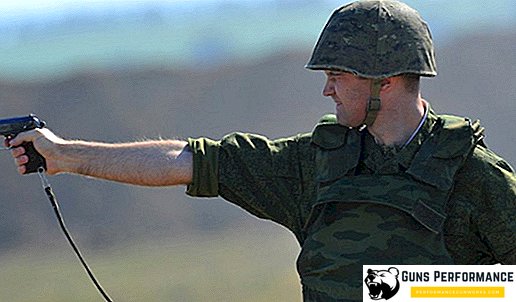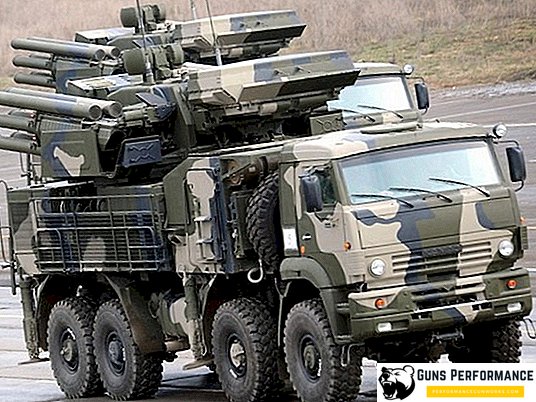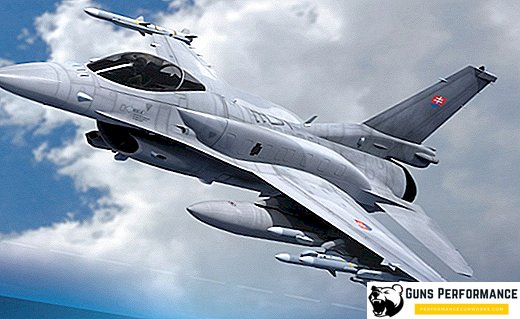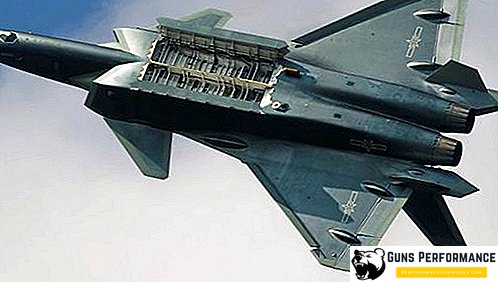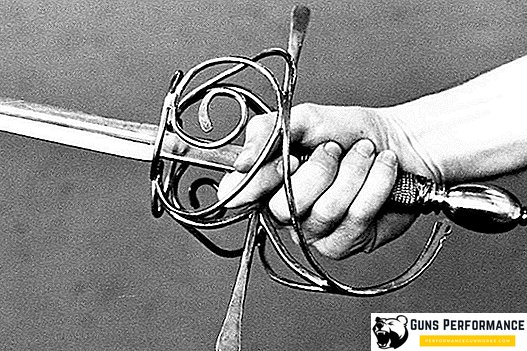
At the beginning of the XVI century, France, and then other European countries, was enveloped in the "duel fever", which raged on the continent for more than three centuries. In just a few dozen years of the rule of the French king Henry IV, the duel led to the death of approximately ten thousand people, most of whom belonged to the nobility. The main weapon of dueling fights of the time was the sword.
Sword. This word itself is shrouded in a romantic aura. Saying it as if you are transported to the narrow streets of Paris or Seville in the world of arrogant and hot-tempered hidalgo and musketeers, so skillfully described in the genius books of Dumas and Arturo Peres-Reverte. Without a doubt, the sword is the most "noble" edged weapons, the defender of noble honor and the most loyal friend of Breter.

It is believed that the sword appeared around the middle of the XV century in Spain. Very quickly, it became popular not only in the army, but also as a civilian weapon of nobles or simply wealthy people. Over time, the sword turned into an indispensable attribute of any man from a noble class, and fencing with swords became the favorite game of the nobles. No wonder in different European countries (including Russia) there was a custom of the so-called civilian penalty, during which a sword was broken over the head of the convict.
It was the sword that made a huge contribution to the development of fencing. Since the duel with swords was common, men from a young age learned to handle this weapon. Fencing lessons were common, they were taken by men of all ages. In Europe, even there was a very specific institution - fencing fraternities. These associations of professional fencers had an extensive network of branches, experienced instructors and a special exam system.
Today, fencing with swords is an Olympic sport, although it must be recognized that the sporting fight with swords is very different from the fencing fights of the past. The same can be said about the design of the sports sword, which has little in common with the blades of the musketeers.
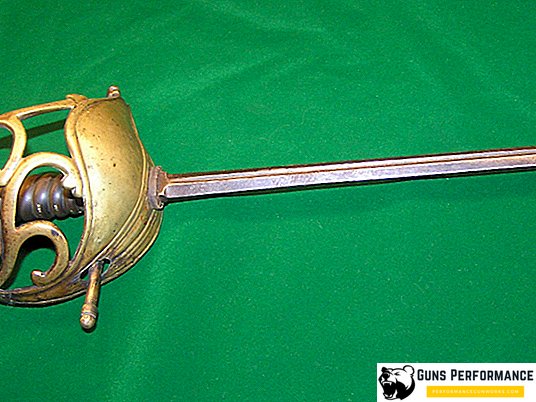
Rapier is considered a further development of the sword. Translated from Spanish, espada ropera literally means “sword for clothing,” that is, a weapon worn with a civilian suit. In other words, the rapier was an exclusively civilian weapon, designed primarily for thrust. Such a lightweight version of the sword. In Russia, a foil is often called a weapon with a faceted blade, intended for training fights. However, the main difference between a sword and a rapier is that the latter has never been a military weapon.
It should be said that there is a lot of confusion on this issue. In historical sources the same weapon can be called both a sword and a rapier. A similar situation is also observed in popular literature (for example, in the Three Musketeers). Of course, the most common opinion is that the sword is a weapon that could chop the enemy, and a rapier only to inject. But, probably, contemporaries did not go too far into such subtleties, therefore, initially these names were synonymous, which subsequently led to a noticeable confusion.
Description
A sword is a blade piercing or piercing-chopping weapon with a narrow straight double-edged, single-edged or faceted blade and a complex guard. On average, the length of the blade was one meter, but there were more "overall" instances. Its cross section could be hexagonal, triangular, oval, rhombic, concave. The weight of the weapon, as a rule, was about 1.5 kg.
The blade of the sword could have dale or ribs. It ended with a shank on which a sword handle with a bow and guard was mounted. Sword guards are striking in their grace, complexity, and diversity, some of which had devices to capture the enemy's blade. Currently, this part of the sword is used to classify this weapon.
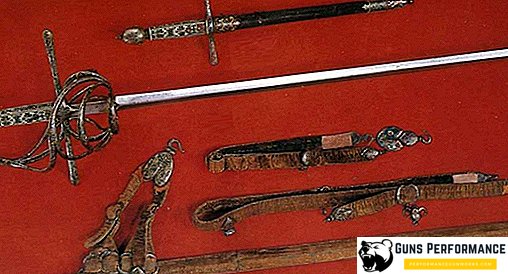
In fact, the combat sword was a somewhat lightweight sword with a narrow and flexible blade, designed more for an injection than for cutting cuts. It should also be added that in the design of this weapon a lot of attention is paid to protecting the hand of the fencer. The evolution of the sword followed the path of its relief and gradual transformation into an exclusively piercing weapon. In the late swords, the blades could either be completely absent or not be sharpened.
The classification of swords is based on the size of the blade of the weapon, its weight, and also on the design features of the hilt. One of the most well-known specialists in European edged weapons, Evart Oukshott, divides swords into three large groups:
- Heavy combat swords (reitschwert - from the German "rider's sword"), which could be used both for stabbing and chopping;
- A lighter sword (espada ropera - from the Spanish "sword for clothing"), which had blades, but because of its low weight was not very suitable for delivering chopping blows. This type of weapon was popular in the 16th century, later it was driven out by lighter swords;
- The third type of weapon, which received the English name small sword ("small sword"). Such swords appeared in the middle of the 17th century and were distinguished by a light, faceted blade of short length.

History of the sword
The sword is a further historical development of the sword. This statement absolutely does not mean that it is a better weapon than the good old sword, just at the time of its appearance it was more suitable for the changed conditions of warfare. A sword would have been useless on medieval battlefields, but already in the Renaissance it turned out to be a very effective combat tool.
The sword can be called the same age as the firearm. Moreover, the birth of these weapons is associated with the widespread use of rifles and artillery on European battlefields. Today, there are several hypotheses regarding the causes of these weapons.

Some authors believe that the sword appeared in response to the further improvement of plate armor, which became practically invulnerable to chopping blows. Like, using a thin blade, it was possible to hit the enemy in heavy armor, striking thrusts at their articulations. In theory, it may look beautiful, but in reality it seems almost impossible. The so-called maximilian armor had a degree of protection that was not inferior to modern spacesuits for deep-sea diving. It is extremely problematic to hit an enemy protected by such armor in a real fight.
Another theory seems to be more plausible, according to which swords appeared not to pierce heavy armor, but because of the appearance of firearms, heavy armor gradually receded into the past. There was no sense in carrying an incredible amount of iron on oneself if it could not protect a fighter from a flying bullet. Heavy swords of the late Middle Ages were precisely designed to break through such armor, after the reduction of protective weapons they also became unnecessary. At that moment the sword began its triumphal march.
It should be said that the early heavy sword was not much different from the medieval sword, it was somewhat lighter and more elegant than it. Even the additional protection of the hand of the swordsman could also be found in swords of an earlier period. True, the fencing technique, sharpened on the application of thrust, led to a change in the grip of the weapon. For its greater controllability, the index finger lay on the cross from above and needed additional protection. In addition, at the same time, metal plate gloves came out of use, which prevented the normal use of firearms. So gradually the sword handle turned into that complex structure, by which it can be unmistakably recognized among other bladed weapons.

It is believed that the first swords appeared in Spain around the middle of the XV century. This weapon very quickly became popular among the nobles. Swords were lighter than swords, so they were more comfortable for everyday wear. This weapon was richly decorated to emphasize the status of the owner, but at the same time it absolutely did not lose its fighting qualities. Already during this period there was a division into combat and civil swords. By the end of the 15th century, the latter version got its own name espadas roperas, which passed into other languages and gave its own name to a new weapon - rapier.
By the way, the term "sword" does not exist in most European languages. This weapon wore (and carries) the name "sword". In Spanish, espada, in French - épée, in English - sword, and only the Germans gave the sword their own name - Degen. Moreover, in German, Degen also means a dagger, which gave some researchers reason to believe that he was the predecessor of the sword.
The sword gradually spread to all kinds of troops, finally replacing the sword. The XVIII century can be called the heyday of this weapon, then it gradually began to be forced out of the army with broadswords and sabers.
Civilian swords were lighter and already military weapons, often only their point was sharpened. At the end of the 17th century, a short civilian sword, which, due to its light weight, made it possible to carry out virtuoso movements with a blade, came into use in France. This is how the French fencing school appeared. At this time, the rapier and the sword become almost indistinguishable from each other and completely lose the chopping function. The reduction in the mass of the sword was not only due to a decrease in its length and width, but also due to the fact that the blade became faceted. Thus, a light civilian sword appeared, which survived until the beginning of the 20th century without any special changes.
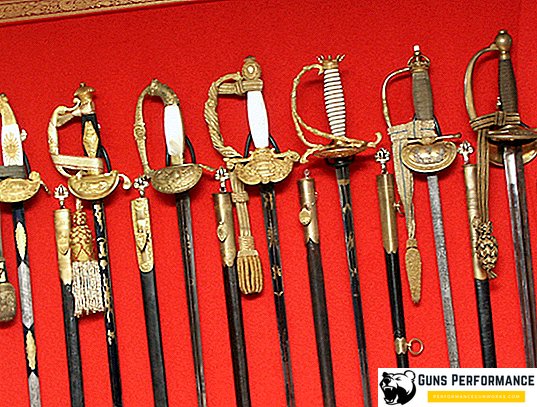
The most popular were triangular blades, although there were samples with six edges. Initially, the blades were made wide at the handle, it is believed that this part of the sword was intended to parry the blows of the enemy. The classic narrow shape of the sword finally acquired the era of the Napoleonic wars. We can say that from this moment the evolution of the sword is over.
It should also be said that the light civil sword became the prototype of the modern sports rapier, and the main techniques of sports fencing are based on the techniques of the French school.
Civilian sword was extremely popular weapon. It was worn by nobles, bourgeois, military in peacetime and even students. Wearing a sword for them was a privilege, students usually received swords after graduation, but there were exceptions. For example, students of Moscow University received the right to carry these weapons after they entered the university.
German students not only wore swords with pleasure, but also loved to use them in dueling fights. Moreover, young men in Prussia were extremely proud of the scars received in such battles. Sometimes they were specially rubbed with gunpowder so that the mark would remain for a lifetime.
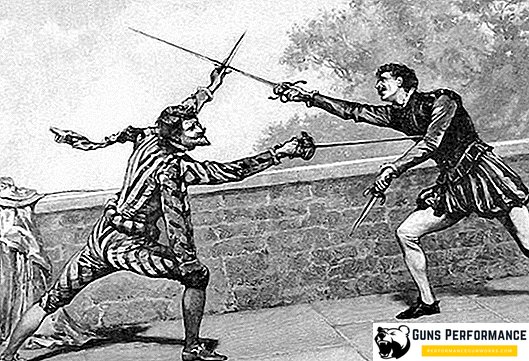
In Russia, they used archery units to equip with swords, but this weapon did not stick. Later, it began to be massively used in parts of the new system, and Peter the Great armed all the Russian infantry with swords. But then at the rank and file the sword was replaced with a half-tab. The sword was left only to the officer corps and guards musketeers. By design, Russian swords were no different from their foreign counterparts.
In the XIX century, swords in the Russian army lose the value of military weapons and are gradually replaced by sabers. However, officers continue to carry them out of order, as a parade weapon. Up until 1917, the sword was the weapon of the generals and officers of the cuirassier regiments outside the ranks, in addition, it was worn by civilian officials as an element of ceremonial clothing.
Fencing
The appearance of the sword gave a powerful impetus to the development of fencing. It cannot be said that before this they were cut with swords, as it should, but it was the lightness of the sword that made it possible to significantly expand the arsenal of fencing techniques. Recognized schools of fencing appeared very quickly: Italian, Spanish, French, German. Each of them had its own characteristics.
The Germans, for example, paid a lot of attention to chopping blows, and used a heavy pistol as a side weapon, with its handle striking it like a club.
In the Italian school of fencing, for the first time, they focused on piercing beats with the point. It was in Italy that the principle of "kill with a point, not a blade" was born. In addition, a special dagger - dagu was often used as an additional weapon in a fight. By the way, it is believed that duels appeared in Italy, replacing medieval knightly tournaments and fights.
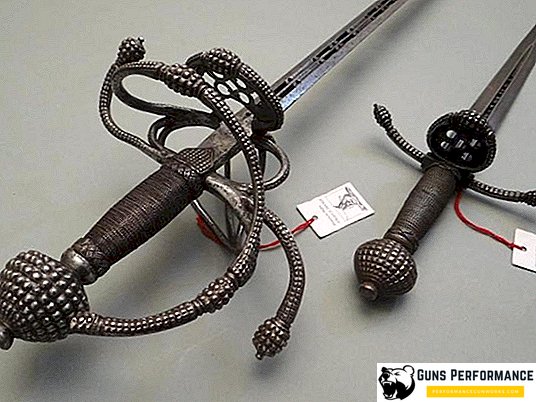
The French school of fencing spawned a light short sword and gave the world the basic techniques for handling it. That it is the basis of modern sports fencing.
In England, during fights often used a special shield, brass knuckles or dagu.
The Spanish school of fencing was called Destreza, which can be translated as "true art" or "skill." It was taught not only to fight with swords, but also to use items such as a cape, dag, and a small shield in battle. The Spaniards paid attention not only to the skills of handling weapons, but also the moral development of the fighter, the philosophical aspects of the art of war.
Does existing sports fencing look like a real sword fight? There is an interesting statement that if a modern master of sports fencing got into the past, he would have easily coped with any master of the Renaissance sword. Is it so?
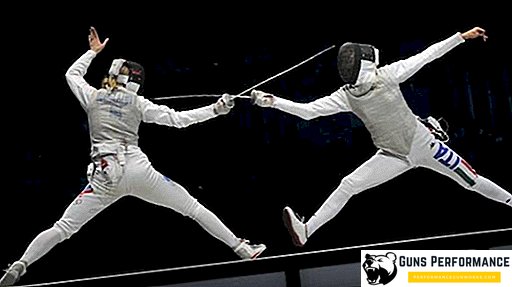
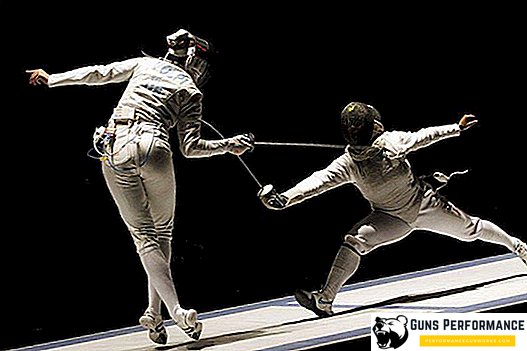
The most important technique of modern athletes is the attack on the lunge, which is almost completely absent in the ancient Italian and Spanish schools of fencing. However, would he be useful in real combat?
The attack on the lunge forces the swordsman to stretch the stance. In this position, it is static, and it is difficult for him to defend against enemy attacks. In sports fencing, the duel is stopped after the injection, which, of course, is impossible in real combat. In this case, a single injection does not guarantee victory over the enemy. In sports fencing, there are practically no defenses; battles are held according to the principle “the first to hit, he took the point”. In a real battle, it is simply necessary to defend oneself, for a missed injection means not a loss of points, but a wound, and even death.
And in the arsenal of historical schools of fencing, there were not only defenses with a blade, but also movements of the corps: sharp bounces, retreats from the line of attack, abrupt level changes. In modern fencing, going away from the line of attack is a forbidden method.

Now let's look at the weapons used by modern athletes and compare them with the old-time swords. A modern sports sword is a flexible steel bar weighing 700-750 grams, the main task of this weapon in combat is to achieve a light touch of the opponent’s body. Swords of old masters could weigh up to 1.5 kg, with this weapon it was possible not only to prick, but also to chop, depriving the enemy, for example, of the hands.
Even the fencing racks described in the old manuals are the opposite of the modern ones.
There is another myth, it is associated with the opposition of European and Eastern techniques of fencing. Here, they say, the Japanese are real virtuosos of possession of cold arms, and the Europeans defeated their rivals in fights only at the expense of physical strength and endurance.
This is not entirely true. The development of Japanese fencing art can be divided into two major stages: before the advent of the Edo era and after it. The early periods of the history of the Land of the Rising Sun were remembered by the almost incessant civil wars in which the warriors fought on the battlefield using long swords of tati and heavy armor. The fencing technique was very simple and corresponded to that used in medieval Europe.
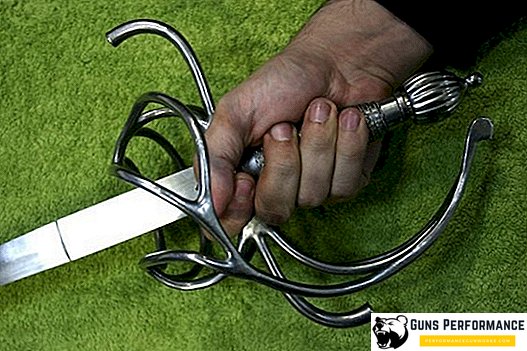
After the onset of the Edo era, the situation changes dramatically. There is a rejection of heavy armor and long swords. A new mass weapon becomes a katana, which leads to the emergence of a new fencing technique, complex and refined. Here you can draw direct analogies with Europe, where similar processes took place: a heavy combat sword was replaced by a sword. It was the appearance of these weapons that led to the emergence of very complex fencing schools, such as the Spanish Destreza, for example. Judging by the written sources that have reached us, the European fencing systems are not much inferior to the eastern ones. Although, of course, had their own features.




